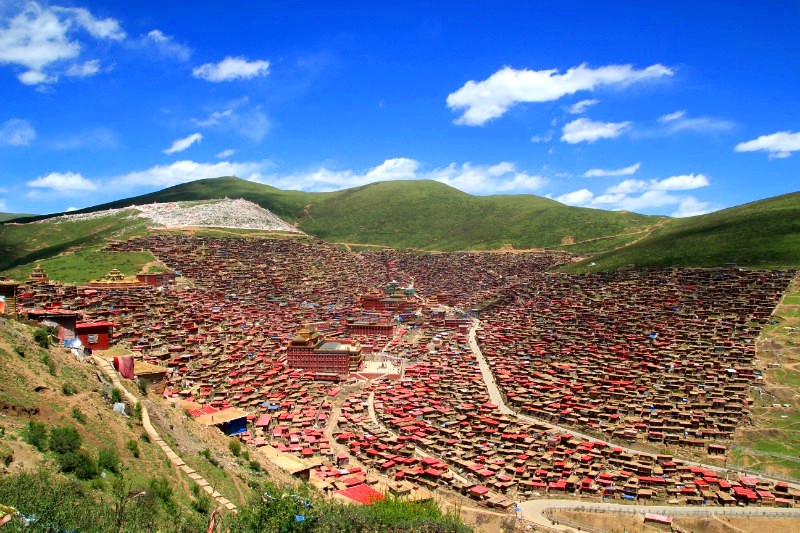
The partial demolition of the famed Larung Gar Buddhist Institute has claimed two more lives with the suicide death of two resident nuns in Serthar (Ch: Seda) County, Kardze (Ch: Ganzi) Tibetan Autonomous Prefecture, Sichuan Province.
The partial demolition of the famed Larung Gar Buddhist Institute has claimed two more lives with the suicide death of two resident nuns in Serthar (Ch: Seda) County, Kardze (Ch: Ganzi) Tibetan Autonomous Prefecture, Sichuan Province.
The total number of known suicide protests by nuns following the demolition of Larung Gar has now reached three. The two nuns, identified as Tsering Dolma and Semgha, hanged themselves on 19 July at their residence located in the Pema Khando Nuns’ Residence. The demolition work began on 20 July and will continue until next year.
Tsering Dolma left a suicide note, in which she had expressed extreme distress at the ongoing destruction of the Institute and disruption of the lives of the practitioners.
She was born and raised in Kyungchu (Ch: Qiongxi) County, Ngaba Tibetan and Qiang Autonomous Prefecture, Sichuan Province. Semgha was from Karda (Ch: Gangmuda) Township in Dzamthang (Ch: Rangtang) County, Ngaba Tibetan and Qiang Autonomous Prefecture, Sichuan Province.
On 17 July, another nun whose identity remains unknown attempted suicide protest but was stopped by fellow nuns.
Earlier on 20 July, another nun named Rigzin Dolma who also lived at the same Pema Khando Nuns’ Residence hanged herself to protest the demolition.
The demolition is part of an order issued by the Chinese authorities in a seven-point document. It provides step-by-step guidance in dismantling the housing facilities of thousands of monastic and lay practitioners, reducing the number of residents to a government-set ceiling of 5000.
The destruction of homes at Larung Gar will be completed before 30 September 2017, according to the order issued by the provincial authorities. The order was developed at two conferences held in Beijing this year and presided over by Chinese president Xi Jinping. The Second National Work Conference on Religion was held in April and the Sixth Tibet Work Forum in August.
